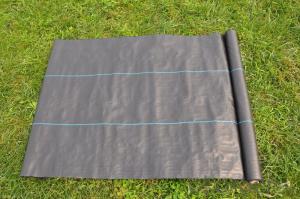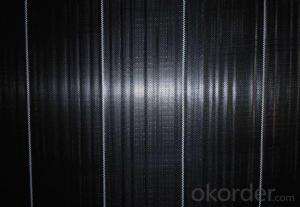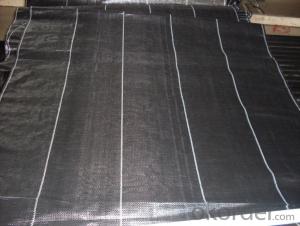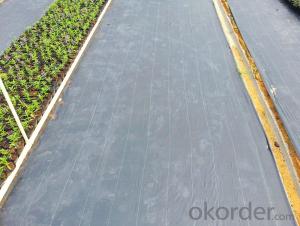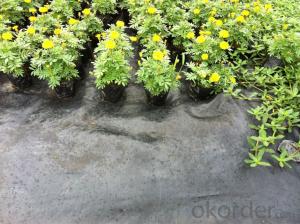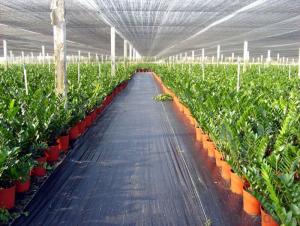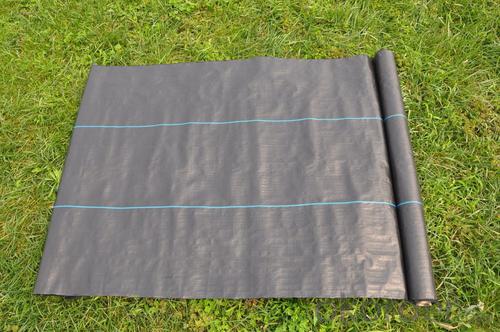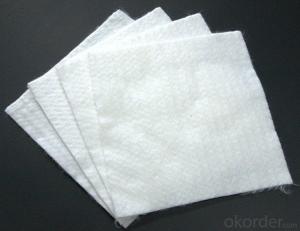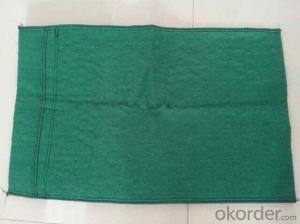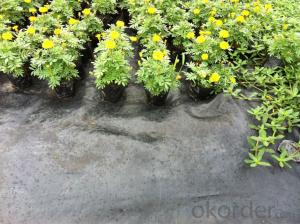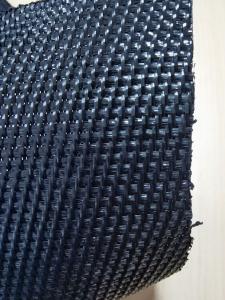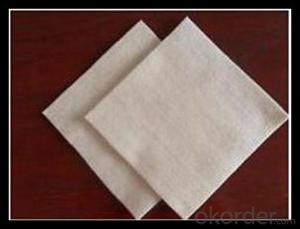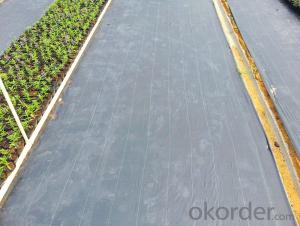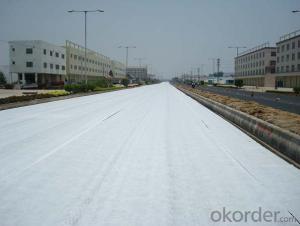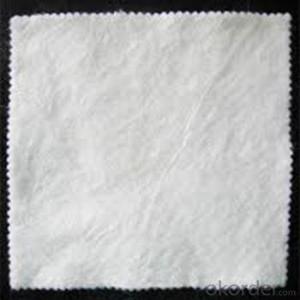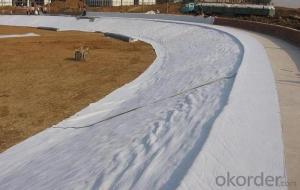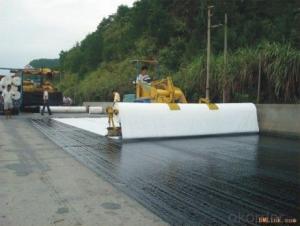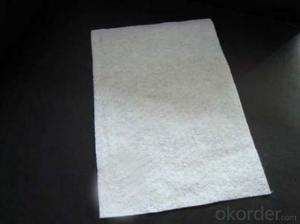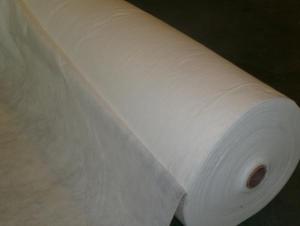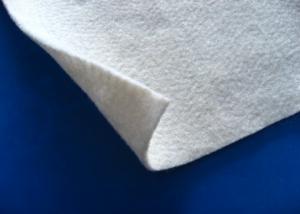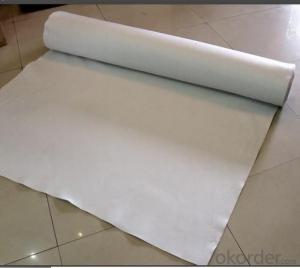Geotextile Tubes Market PP Woven Geotextile/ Polypropylene Fabric with UV Resistant
- Loading Port:
- China main port
- Payment Terms:
- TT OR LC
- Min Order Qty:
- 5000 roll
- Supply Capability:
- 10000 roll/month
OKorder Service Pledge
OKorder Financial Service
You Might Also Like
PP Woven Geotextile Description:
1.Woven Geotextile Description:
Made from PP(Polypropylene) or PE (Polyethylene) flit yarn on circle weave machine. With UV Resistant, this products could be used longer.
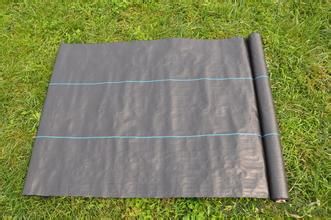
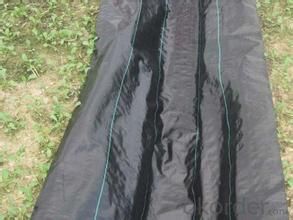
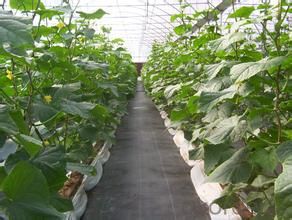

2.Wooven Geotextile Functions and Features:
1)Excellent weed control
2)Excellent UV resistance
3)Moisture,fertilizers,air reach plants to allow for healthy soil
4)Good water and air permeability
5)Exceptional toughness and strength
6)Durable,tear-resistant,anti-rot and anti-mildew
7)Light weight,easy to install,follows natural ground contours
3. Woven Geotextile Property:
1) Light weight, high strength, low elongation, easy to construct.
2) Reinforcement, separation, drainage and filtration, fencing function, etc.
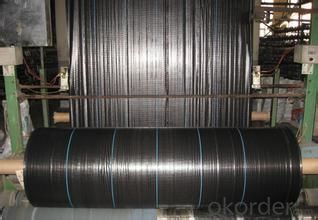
4. FAQ:
- Q: What can we do for the special customer?
A: Provide custom made service with customer's drawing; We make sure to provide you with the best solutions for your individual case. Whether standard items or non-standard items.
- Q: What can we supply?
A: We provide high levels of communication from start to finish.
- Q: What is our advantage?
A: Top Cemented Carbide has extensive business experience, Fast delivery and high quality.
- Q: Are geotextiles effective in preventing soil contamination?
- Yes, geotextiles are effective in preventing soil contamination. They act as a barrier between the soil and potential contaminants, such as chemicals or pollutants, preventing them from leaching into the soil. Geotextiles also help in stabilizing the soil, reducing erosion, and promoting proper drainage. Overall, they play a crucial role in protecting soil quality and preventing contamination.
- Q: Drainage board geotextile or gravel plus geotextile which water treatment effect is good
- Sure that the drainage board plus geotextile drainage effect is good, but the cost than the gravel Gao Hua Zhi geotechnical materials manufacturers to answer
- Q: Can geotextiles be used for soil stabilization?
- Yes, geotextiles can be used for soil stabilization. They are commonly used to reinforce soils and prevent erosion, providing stability to slopes and embankments. Geotextiles help to distribute loads, increase soil strength, and improve drainage, making them an effective solution for soil stabilization projects.
- Q: What are the key considerations for geotextile installation in cold climates?
- There are several key considerations for geotextile installation in cold climates. First, it is important to choose a geotextile material that is specifically designed for cold weather conditions. This ensures that the material will not become brittle or easily damaged in freezing temperatures. Additionally, proper site preparation is crucial, including removing snow and ice from the installation area to ensure a stable base for the geotextile. It is also important to properly anchor the geotextile to prevent shifting or movement due to freeze-thaw cycles. Overall, careful selection of materials and proper installation techniques are essential for successful geotextile installation in cold climates.
- Q: What are the limitations of using geotextiles in high-water flow conditions?
- One limitation of using geotextiles in high-water flow conditions is their susceptibility to clogging. As water flows through the geotextile, it can carry fine particles and debris that may accumulate and clog the material, reducing its effectiveness. Additionally, in extreme flow conditions, the geotextile may not provide sufficient resistance or protection against erosion, leading to potential failure. Therefore, careful consideration of flow rates and proper maintenance are crucial to mitigate these limitations and ensure optimal performance of geotextiles in high-water flow conditions.
- Q: How do geotextiles help with soil stabilization?
- Geotextiles help with soil stabilization by providing a barrier that separates the soil layers, preventing them from mixing and maintaining their structural integrity. This prevents erosion, improves drainage, and enhances the overall stability of the soil, reducing the risk of slope failure and ensuring long-term stability of the area.
- Q: How do geotextiles contribute to land reclamation projects?
- Geotextiles play a crucial role in land reclamation projects by providing soil stabilization, erosion control, and drainage solutions. They are used to separate different soil layers, preventing mixing and maintaining the integrity of the reclaimed land. Geotextiles also enhance filtration and provide a stable base for vegetation growth, allowing for the successful establishment of plants and vegetation on reclaimed areas. Additionally, they aid in reducing soil erosion caused by wind or water, protecting the newly reclaimed land from degradation.
- Q: Filter geotextile performance ~ main function ~
- Asked to filter the geotextile, you answered wrong
- Q: Waterproof and protective layer between which type of geotextile isolation layer
- Personally think to take impervious geotextile. Anti-seepage geotextile has excellent water permeability, filterability, durability, can be widely used in railways, highways, sports museum, dams, hydraulic construction, then hole, coastal beach, reclamation, environmental protection and other projects. Mainly staple acupuncture non-woven geotextile and split film woven geotextile. Check the original post & gt; & gt; trouble to adopt, thank you!
- Q: Can geotextiles be used in geosynthetic clay liner caps?
- Yes, geotextiles can be used in geosynthetic clay liner caps. Geotextiles are often used as a separate protective layer or as a reinforcement in geosynthetic clay liner caps to enhance their performance and provide additional benefits such as filtration, separation, and erosion control.
Send your message to us
Geotextile Tubes Market PP Woven Geotextile/ Polypropylene Fabric with UV Resistant
- Loading Port:
- China main port
- Payment Terms:
- TT OR LC
- Min Order Qty:
- 5000 roll
- Supply Capability:
- 10000 roll/month
OKorder Service Pledge
OKorder Financial Service
Similar products
Hot products
Hot Searches
Related keywords
